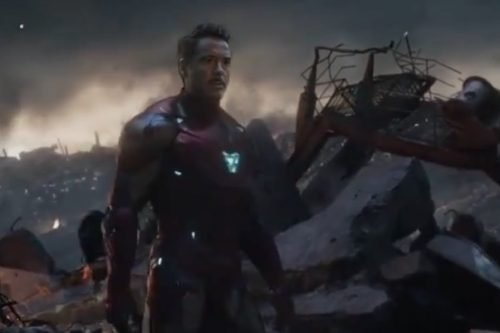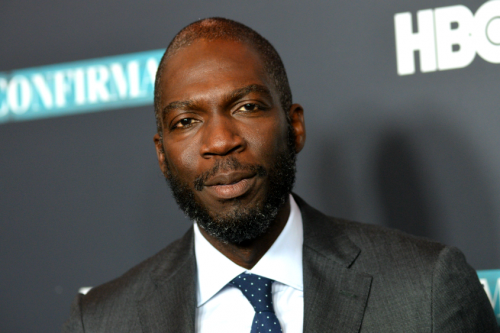10. Her conception. She is a woman, but, like Macduff, not of woman born. As she explains in “Wonder Woman,” the new movie about her, “My mother sculpted me from clay, and I was brought to life by Zeus.” The expression on the face of the mortal man to whom she delivers this line is a sight to be treasured. Even though he is clearly thinking “fruitcake,” he is much too polite to say so. And too smitten.
9. Her island. She is called Diana, and the cradle of her existence is Themyscira, girdled with azure seas and protected from the world beyond by an invisible dome, as if the gods of ancient myth were staging their own version of “The Truman Show.” The name of the island is true to myth, which suggests that someone at DC Comics has been knuckling down to Herodotus and the Greek tragedians. In “Prometheus Bound,” written in the fifth century B.C., we are told that Themiscyra is the home of the Amazons, “who loathe all men.” In the movie, directed by Patty Jenkins, the islanders don’t get much of a chance to work on their loathing, because men are blissfully absent and, by definition, superfluous. The women are thus free to practice their homely skills, such as leaning sideways from the saddle of a galloping horse until their heads are on a level with their stirrups and then, from this comfortable position, loosing off an arrow at the target. For relaxation, they settle down to a little savage swordplay, leavened by hand-to-hand combat. Anything for a quiet life.
8. Her education. A thorough schooling in the disciplines listed above, from girlhood to full bloom. Diana is played as a kid by Lilly Aspell, scything the air with karate chops in frustration at not being able to join the training camp; as an older child by Emily Carey; and as an adult, for the remainder of the proceedings, by Gal Gadot—the best reason to see the movie, and the mainstay, one presumes, of the franchise to come. Her most specialized talent lies in the use of a magic lasso, which combines the snakiness of Indiana Jones’s whip with the blaze of golden lightning and the practicality of a polygraph. Any foe ensnared by this lasso, we are told, is obliged to confess the truth. All in all, a handy implement to keep about the house.
7. Her aunt. The queen of mean: Antiope by name, and played in the film by Robin Wright, with an accent, known to linguists as All-Purpose Antiquity, that floats gently around the eastern Mediterranean. Scorning the single dart, she springs skyward and, pausing at the zenith of her leap, fires three arrows at once. Basically, she gets to do all the things that, as the First Lady in “House of Cards,” she desperately yearns to do but is forbidden from doing by the pitiful confines of the plot. Fashion tip: Antiope’s helmet is bang on trend, equipped as it is with severe sidebars that follow the curve of her cheekbones. Very Bronze Age. Very now.
6. Her introduction to twentieth-century life. This occurs when a German plane crashes through the dome and into the ocean. Diana dives in to save the pilot, outswimming “Baywatch” in one move. Her catch is not a German but an American spy, Steve Trevor (Chris Pine), who is seconded to British intelligence. We are in the final throes of the First World War, and Steve has stolen a book of formulas from a mad scientist, who, on the orders of a German general, is brewing poisons so ruinous that they could bring the conflict to a genocidal close. One result of Steve’s mission is that he is pursued onto the beach of Themyscira by German troops with guns—strange devices never seen by Amazon eyes. This is the cue for a clash between opposing tools of slaughter: the Homeric versus the mechanized. We have been prepped for this encounter by a more peaceable scene, in which Diana enters a grotto and comes upon Steve (what a superbly unmythical name that is) as he getting out of his bath. She stares serenely at his naked male form, the first that she has ever observed, and inquires, “What is that?” After a mumble of confusion, he says that it’s a watch, and that it tells the time. “You let that little thing tell you what to do?” she asks. Yes, my lady, that’s pretty much it. Rarely has a double entendre done such sterling work.
5. Her trip to London. She is ferried there in a boat, apparently in the course of a single night, by Steve. At her invitation, they sleep together—that is, grab some actual sleep—on deck, an arrangement that makes him squirm. Diana may have lived for thousands of years, but Steve, who thinks that proximity is for married couples, is the old-fashioned one. As for London, Diana takes one look at the smog and the filth and declares, “It’s hideous.” Her next move is to trade her long boots and breastplate, possibly ill-suited to the British climate, for a long-skirted suit, spectacles, and a decorous hat, before being dispatched, together with Steve and a bunch of friendly ruffians, to the battlefields of Europe. There, her task is to vanquish the villain—or rather, as she believes, to lay low the god of war, Ares, to whose extinction she and her fellow Amazons have been pledged since time immemorial. Whatever.
4. Her vambraces. She herself never uses the word, and I am happy to be corrected by any mounted knights who have seen the movie, but I gather that a vambrace is an armored guard that protects the forearm. Diana wears a pair of them, but hers are not just any old vambraces. Hers are blessed with unearthly powers of resistance; as she holds her arms crossed in front of her, bullets—even when rattled off by a machine gun, as she races across no man’s land on the Western Front, toward the enemy trenches—ping and clang off the vambraces and do no harm. What would occur if a stray round struck any other portion of her body is not something that the movie chooses to explore, but it’s worth noting that Diana decides not to supplement her vambrace with a couter, the piece of metal with which, as any sensible warrior knows, you cup and cover your elbow. Note to any future foes of Wonder Woman: lay aside your lethal weapons and try poking her in the funny bone. She’ll hate it.
3. Her beauty. It may be skin-deep, but then so is a strip of film; in each case, the surface carries mysterious hints of depth. Gadot was Miss Israel, an achievement that places her in distinguished company. Beauty pageants are correctly viewed, these days, as grim occasions, rife and rank with objectification, but the historical fact remains that, for a number of serious stars, they were the first unseemly step on a difficult ladder. Michelle Pfeiffer was Miss Orange County. Lucia Bosé, an early muse for Michelangelo Antonioni, was crowned Miss Italia, in 1947. Three years later, Sophia Loren made the finals but failed to win, which makes you wonder what the other contestants were like. And a refrigeration company once named Kim Novak “Miss Deepfreeze,” an honor that doubtless appealed to Alfred Hitchcock; you could plausibly argue that “Vertigo” was one long thaw. What matters for these performers, and now for the Gadot of “Wonder Woman,” is that the beauty in question is not a shell or a disguise but a weapon, slicing through human weakness more efficiently than a sword. When Diana enters a roomful of military men and politicians, in London, she flusters them and leaves them unmanned. Her smile, though dazzling, is not flirtatious, let alone seductive, and Jenkins, as the director, is best placed to insure that it stays that way. It is a smile amused by the follies of men, and by the forward strides of modernity, such as they are. When told what a secretary does for a living, Diana replies that where she comes from, that would be called slavery. Touché.
2. The fact that she is not Batman. Or Superman. Or any other klutz in a cape. There is a nasty moment in “Wonder Woman” when a truck, bearing the word “Wayne” on the side, pulls up outside the Louvre, in Paris. For a second, I was expecting Ben Affleck to climb out of the back and start lumbering darkly around the City of Light, but I am delighted to report that he’s a no-show. Indeed, in the wake of this movie, he feels like a bit of a no-point. Diana has been hailed, with justice, as the exception to the superhero rule, but so thoroughly does her story, as told by Jenkins, trounce that of her masculine counterparts that you wind up thinking, Let’s change the rule. We’ve had more than enough of the guys over the past decades. Why can’t they be the exceptions from now on?
1. Her survival instincts. These are twofold. One, she has to weather the tempest of almighty wrath that is levelled at her, during the finale, by the (utterly predictable) baddie. Her response is fiery, fierce, and many-pronged—the most effective prong being a tank that she picks up and tosses with no more fuss than if it were a bale of hay. Two, whilst all this commotion is going on, she has to stop us from checking our phones, finishing our Cokes, and making an early exit. Because, if there’s one thing that can be relied upon to spoil a superhero film, even one as sprightly as “Wonder Woman,” it’s the climax. The movie is twenty minutes too long, and most of those minutes are consumed, near the end, by pyrotechnic dreck. Does anyone truly enjoy this stuff, whoever makes it? Was Jenkins happy to include it? Addicts of the genre, who tend to frame their discussions in terms of the contest between DC Comics and Marvel, may be surprised to hear that the rest of us don’t particularly care, or even notice, which studios make which movies, so long as the end product doesn’t leave us in a vegetative state. On that score, once you elide the ending, “Wonder Woman” rates pretty highly, thanks to the efforts of Gadot, Jenkins, the affable Pine, and others. The tale is told with wit, panache, and a strong dash of camp, and the whole affair is shielded—may the gods of Olympus be praised!—by good humor. Lasso or no lasso, that’s the truth.







Leave a Reply